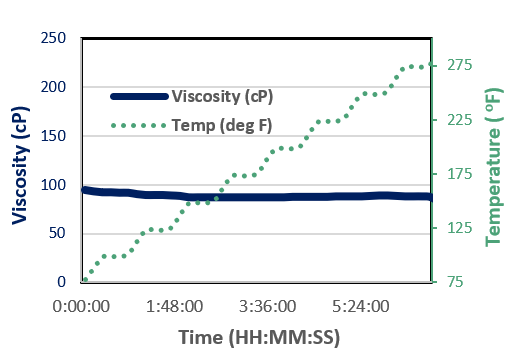
(Source: Hart Energy)
[Editor's note: A version of this story appears in the May 2020 edition of E&P. Subscribe to the magazine here.]
Efficient cleaning and displacement of the drilling mud inside the wellbore before cementing are critical for delivering reliable zonal isolation and long-term well integrity. Despite the advancement in spacer technology and numerous good engineering practices, mud removal remains a challenge in oil and gas well construction.
North American business trends and field practices that will impact wellbore cleaning include increasing lateral length of horizontal drilling, narrowing annular space by minimizing hole diameter and maximizing casing size, and varying quality of the mud as a result of being constantly recycled and reused on multiple wells to bring down well construction expenditures.
The latter practice adds more difficulty to wellbore cleaning because more contaminants are picked up by the drilling mud over time. This results in a complication of the spacer design requiring frequent adjustment of the fluid formulation to provide acceptable compatibility and rheological hierarchy. Furthermore, the recent trend of increasing lateral length stresses the spacer fluid to be highly stable and consistent from surface to downhole conditions. These challenges necessitate the continuous improvement and further development of existing spacer technology, which is used as an intermediate water-based wellbore cleaning fluid pumped in between the drilling mud and cement slurry.
Laboratory development
An unconventional spacer fluid was recently developed at BJ Services to meet the current and increasing demands in wellbore cleanup. This spacer is formulated with an advanced high-performance micromaterial combined with the company’s specialty suspending aid polymer. It is easily adjustable to design multiple densities and is compatible with existing spacer surfactants. The optimized spacer design provides features that give numerous technical benefits to the formulated fluid, making it highly reliable and efficient for mud removal and hole cleaning for long horizontal wells.
Unlike most traditional wellbore cleaning fluids that typically undergo thermal thinning upon exposure to increasing temperatures, this new spacer provides sustained stability, more predictable flow property and uniform fluid consistency under surface and downhole conditions (Figure 1), allowing better displacement of drilling mud. This was confirmed by multiple HP/HT laboratory tests, which include in situ viscosity measurements at constant shear rate (Figure 1) and dynamic settling tests.

The advanced micromaterial that serves as a novel weighting agent has an innate self-suspending property. It also stabilizes the polymer viscosifier by delaying its fast degradation at elevated temperatures. These properties help preserve the original fluid design, keeping a stable suspension of particulates in the fluid for an extended period. This feature is beneficial when pumping the spacer into long laterals wherein exposure of the fluid to harsh wellbore conditions is prolonged.
Stability and flowability were evaluated beyond the standard two-hour static-free fluid API test. The spacer maintains its high flowability and surface mixability well, with no gelation and negligible free water for more than a weeklong period under static conditions, which is an important feature in the event of onsite job delay. Furthermore, it can be easily tuned to provide a less viscous and highly stable fluid for application in a narrow annulus where efficient mud displacement is becoming challenging.
The most important feature of this unconventional spacer is the ability to better displace and clean the drilling mud over traditional fluids. After 10 minutes of contact time, the new spacer demonstrated dramatically improved mud cleaning of the roughened viscometer sleeve (worst case) and complete mud displacement in the smooth sleeve, which simulates the casing surface. Based on laboratory testing, the new spacer has shown to provide more than 95% removal of the different oil-based mud (OBM) field samples used in the Permian Basin, Denver-Julesburg, Marcellus and Austin Chalk.
A shear bond experiment was conducted after the cement slurry had set and bonded to the metal rod that was placed at the center inside the special curing mold to evaluate the impact of mud removal on zonal isolation.
The solid rod inside the mold was first coated with an OBM sample followed by 10 minutes of circulation of the spacer fluid to clean the mud and water-wet the surface of the rod. Then the annular gap between the solid rod and the mold was immediately filled with cement slurry and cured over time. After curing, an external force was applied to break the bond between the set cement and the metal rod.
Basically, poor performance in mud removal by the spacer fluid is indicated by relatively weaker shear bonding. It is known that the presence of nonaqueous drilling mud on the surface of the casing will compromise cement bonding due to changes in the wettability of the surface, leaving it oil-wet. Therefore, a highly efficient mud removal will be indicated by a higher shear bond measurement, denoting superior bonding between cement and simulated casing. The laboratory result in Figure 2 shows the highest cement bonding is obtained with the unconventional spacer cleaning, which also has the most OBM removed (i.e., 97%). Additionally, the spacer demonstrates 94% and 304% improvement in bond strength versus the treatment with conventional spacers No. 1 and No. 2, respectively. This shear bond experiment strongly validates the earlier rotor cleaning tests that evidence a more efficient mud removal is achieved by the unconventional spacer design.

The improved performance in mud cleaning is attributed to the high-performance micromaterials of unique morphology comprising spherical and sharp-edge triangular materials (more than 15-20 μ in size) with high surface roughness for better mechanical scouring of the mud from the metal surface. They also are combined with numerous well- dispersed high surface area spherical-shaped materials with less than 15 μ in diameters, which are believed to be relatively porous and have a strong affinity to nonaqueous drilling mud.
Case history
The new spacer has been tested in the field with the first job successfully completed in the Permian Basin. During the trial, 130 bbl of spacer fluid was easily pumped on the fly at a constant rate of 6 bbl/min to 7 bbl/min. This traveled to a total well depth of more than 20,000 ft and passed through a long lateral in excess of 12,000 ft. Throughout the entire pumping time, the density of the spacer was constantly maintained at the target value (11 ppg), and a pressure match of the job simulation was achieved. The spacer provided good thermal stability during the long-time pumping and prolonged exposure to bottomhole temperature (~140 F circulating) and pressure (~6,000 psi) in the long horizontal section of the wellbore. Finally, the drilling mud was completely displaced all the way to the surface, and the cement slurry behind the spacer had reached the top of cement, delivering complete zonal isolation of the wellbore.
Following this first field trial, three more successful jobs were executed in West Texas for a different operator.
Recommended Reading
How Diversified Already Surpassed its 2030 Emissions Goals
2024-04-12 - Through Diversified Energy’s “aggressive” voluntary leak detection and repair program, the company has already hit its 2030 emission goal and is en route to 2040 targets, the company says.
BKV CEO Chris Kalnin says ‘Forgotten’ Barnett Ripe for Refracs
2024-04-02 - The Barnett Shale is “ripe for fracs” and offers opportunities to boost natural gas production to historic levels, BKV Corp. CEO and Founder Chris Kalnin said at the DUG GAS+ Conference and Expo.


